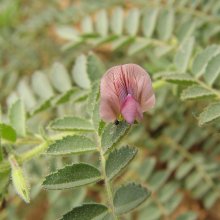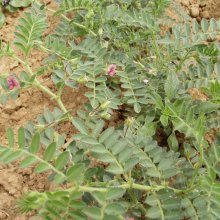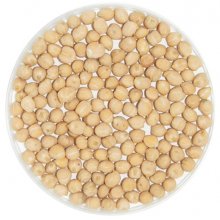Introduction
Chickpea is an annual, self-pollinated crop, adapted to low input and water requirements. Nowadays, it grows all over the world under rainfed conditions. FAO data reports that India, followed by Australia and Pakistan lead the cultivated area of chickpea, with more than 1 million ha each. Mean yield is about 1500 k ha-1 but in irrigation conditions it could reach more than 5000 k ha-1. Among EU countries, Spain, Italy, Bulgaria and Greece are the major producers, and Spain, Italy, Portugal, Germany and France import substantial amounts. During the last 20 years, a rise in global production and in the number of importing countries have confirmed the increasing global demand of this crop.
Key facts about the crop
Archaeological evidence supports that chickpea has been part of human food in the Mediterranean basin since the 6th century B.C. The Middle East is thought to be the place of origin and domestication of this crop, from where was dispersed to the East in ancient times. Chickpea is the unique cultivated species in the genus Cicer. Based in seed and flower traits, it is divided in two main cultivar groups, desi (small, angular and pigmented seeds) and kabuli (larger and rounded seeds) with desi the most widely grown (85% of global production).
The most important chickpea collections are conserved at two CGIAR centres, ICARDA focussing on kabuli types and wild species and ICRISAT focussing on desi types and wild species. Other important collections are maintained in NBPGR (India), CLIMA (Australia) and USDA (USA). In Europe, the largest collections are those of the Russian Federation, Ukraine and Spain. Crosses with wild species are a potential means to increase the genetic variation of chickpea and to introduce resistance genes.
In spite of the large number of accessions conserved, the use of all this germplasm is limited, mainly due to the lack of available characterisation data. One of the goals of INCREASE is to improve this situation.
Why we are working on this crop in INCREASE
Human plant protein intake has to rise in the EU to reduce the impact of agriculture and to have healthier food products. Chickpea is one of those high protein yielding crops adapted to low input conditions. CRF - The National Plant Genetic Resources Centre in Spain - is in charge of active collections of grain legumes, including chickpea, as it is a traditional crop and food in Spain.
Curiosity about the crop
- Would you taste hummus, a dip made of chickpea and paprika?
- Did you known that chickpea besides the traditional recipes could be used to prepare food as yogurt, mayonnaise, pasta, sauces snacks and crispy sweets?
- Did you know that chickpea is an essential protein source, very useful for vegan people, or sportsmen/sportswomen?
- Do you know what aquafaba is? It means "beanwater" and it is the water you usually dump down the drain when you strain cans of chickpeas or other beans. However, it is an excellent vegan substitute for eggs and egg whites in recipes for all kinds of baked goods, meringues, and ice cream.




